I have been in love with miso soup since I was a little kid. The nutty and delicate flavors of this traditional Japanese soup is something I like to serve as a side to other Japanese dishes, with a salad, or to enjoy as a late night snack. My miso soup with tofu and wakame recipe is very simple and yields flavors that are perfectly balanced. Not too bland or too salty, is the perfect comforting dish that’s also low in calories.
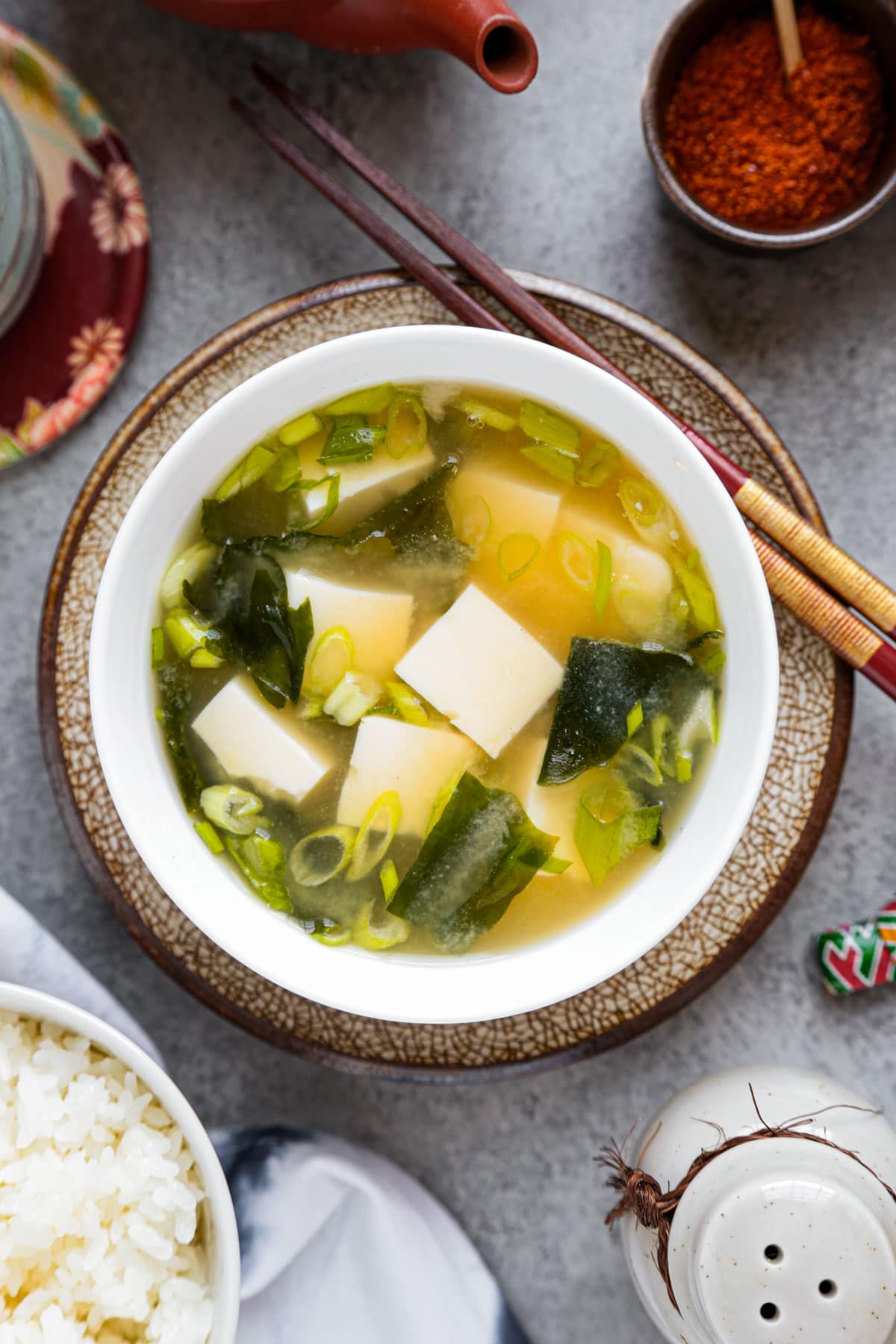
I have had my fair share of good and bad miso soups and can say without a doubt that most of the time, what ruins miso soup is the lack of attention given to it. Many Japanese restaurants here in the West treat miso soup like an afterthought, a freebie added to a lunch set, next to a salad dressed in carrot ginger dressing. The soup is served at the table without an ounce of aroma wafting from it. Sometimes medium or firm tofu is used and other times the wakame has been soaking in the soup for so long that it has expanded into big long leaves. Those are all big no-nos when it comes to making miso soup!
One of the reasons why I love making this soup at home isn’t only because it’s cheap and easy to make, it’s also much better than most of what is served out there. My recipe for miso soup is very easy to follow and will make you fall in love with this simple Japanese dish. The flavors are spot on – not too salty, delicate but full of umami, a little briny and nutty. I show you all the tricks needed to achieve the best and tastiest miso soup!
Table of contents
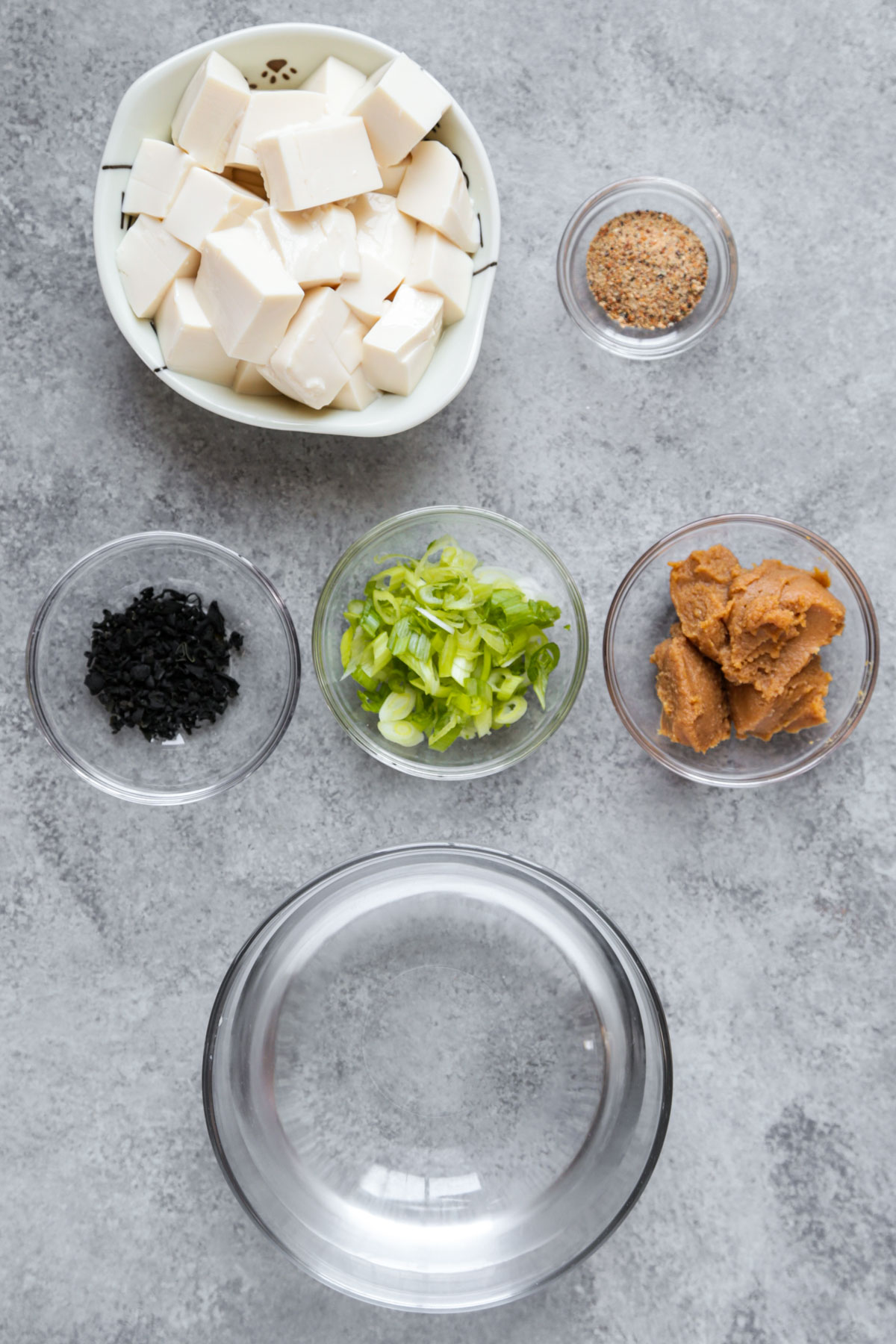
Ingredients
Scroll down to the recipe card for the full recipe.
- Water: I use filtered water but any drinking water can be used to make this soup.
- Dashi powder: Some miso pastes already contain dashi powder so you may skip this step if the one you have does. However, I like to add a little dashi powder regardless of the type of miso paste I am using since I like my soup to be quite savory and full of umami.
- Tofu: I recommend only using silken tofu when making miso soup. That’s because the texture of the tofu is softer and silkier than medium or firm tofu, and falls apart as soon as it hits your mouth. It’s also the only type of tofu used in Japan for misoshiru.
- Miso paste: I like to use either white miso paste of awase miso paste because they are less pungent and salty than red miso paste. To get flavors similar to what you get at a Japanese restaurant, I suggest using white miso paste for its mild and slightly sweet taste (it’s my mother’s favorite type as well).
- Wakame: Dried seaweed is sprinkled into the soup right before serving it so it doesn’t expand too much or gets slimy.
- Green onions: Green onions are added to add a textural element. It also gives the soup a refreshing taste from the slight sweetness of the onions.
Variations
- Make it vegan: Skip the dashi powder and use kombu dashi powder instead. Also, make sure that the miso paste you are using doesn’t contain any dashi as well.
- Add some greens: Add shredded spinach or if you can find it, shungiku (garland chrysanthemum) or moroheiya leaves (mallow leaves).
- Make it nuttier: Add some ground sesame seeds to up the level of nuttiness.
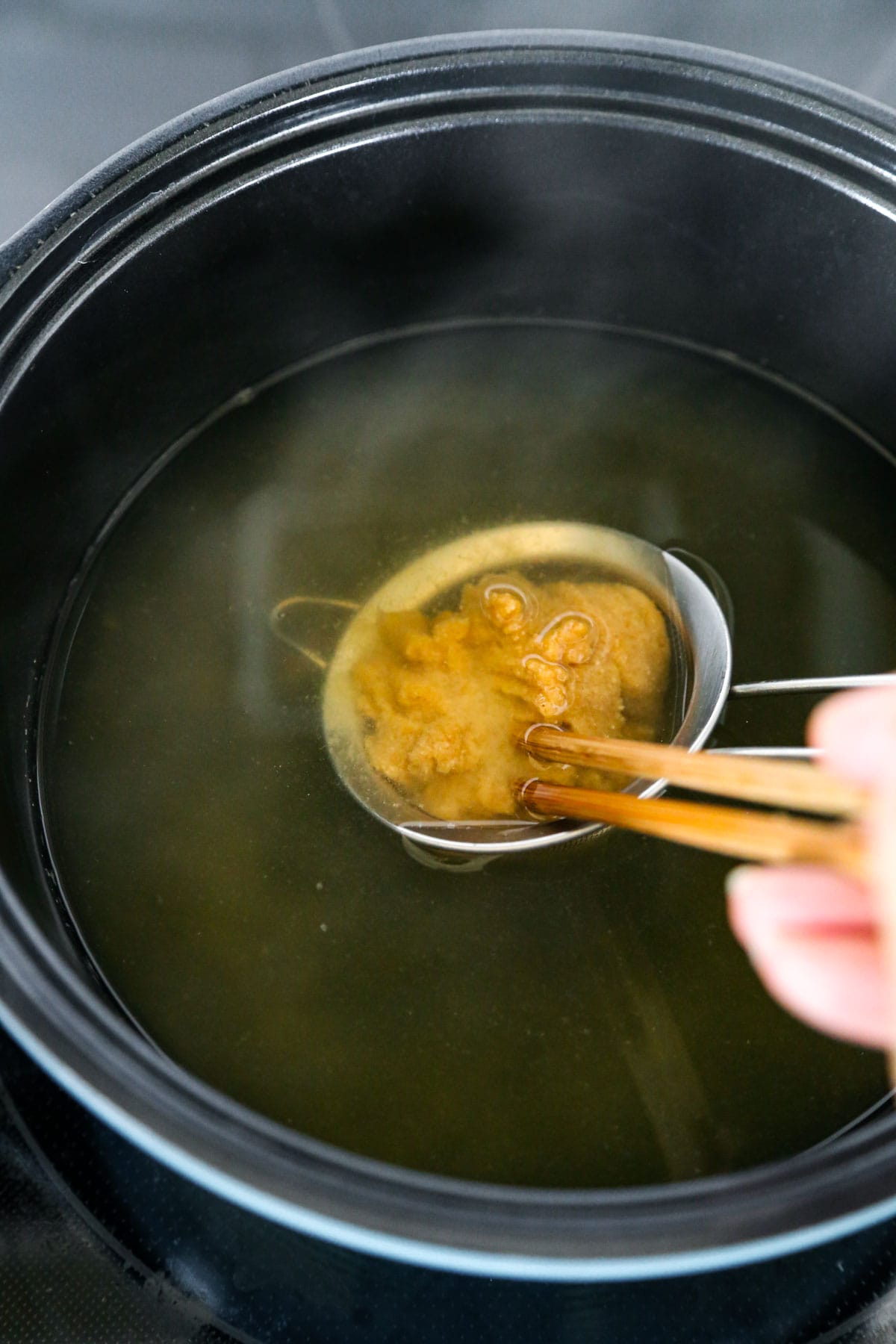
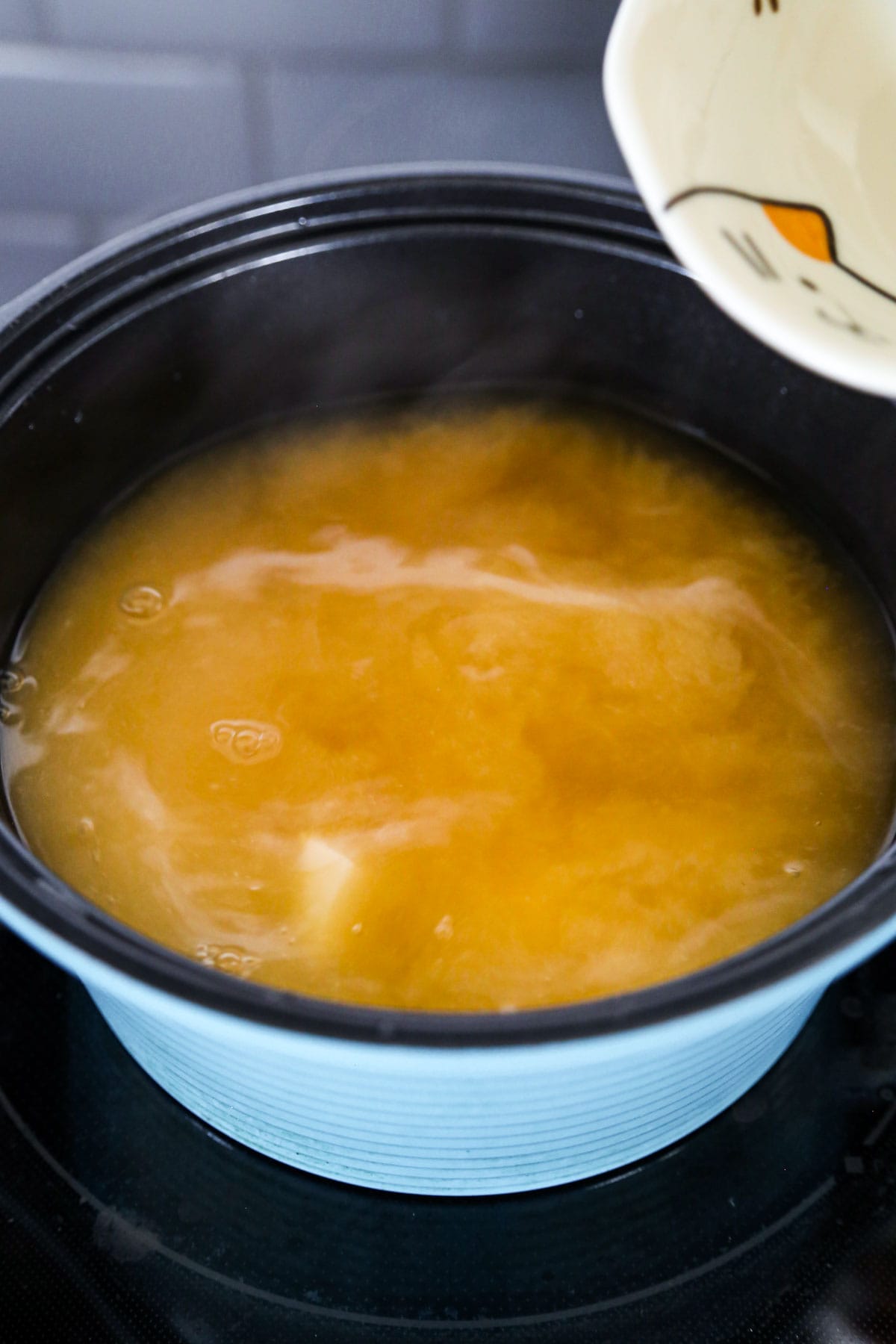
How To Make It
- Open the tofu package and drain. Gently place the tofu block on a cutting board (silken tofu is very delicate, so take your time doing this!) and slice the block into ½-inch cubes.
- Warm up the broth and add the tofu cubes.
- Strain the miso paste and serve the soup with seaweed and green onions.
Expert Tip
- Miso paste should always be added last to preserve the aromatic taste and the nutritional benefits, such as the probiotics.
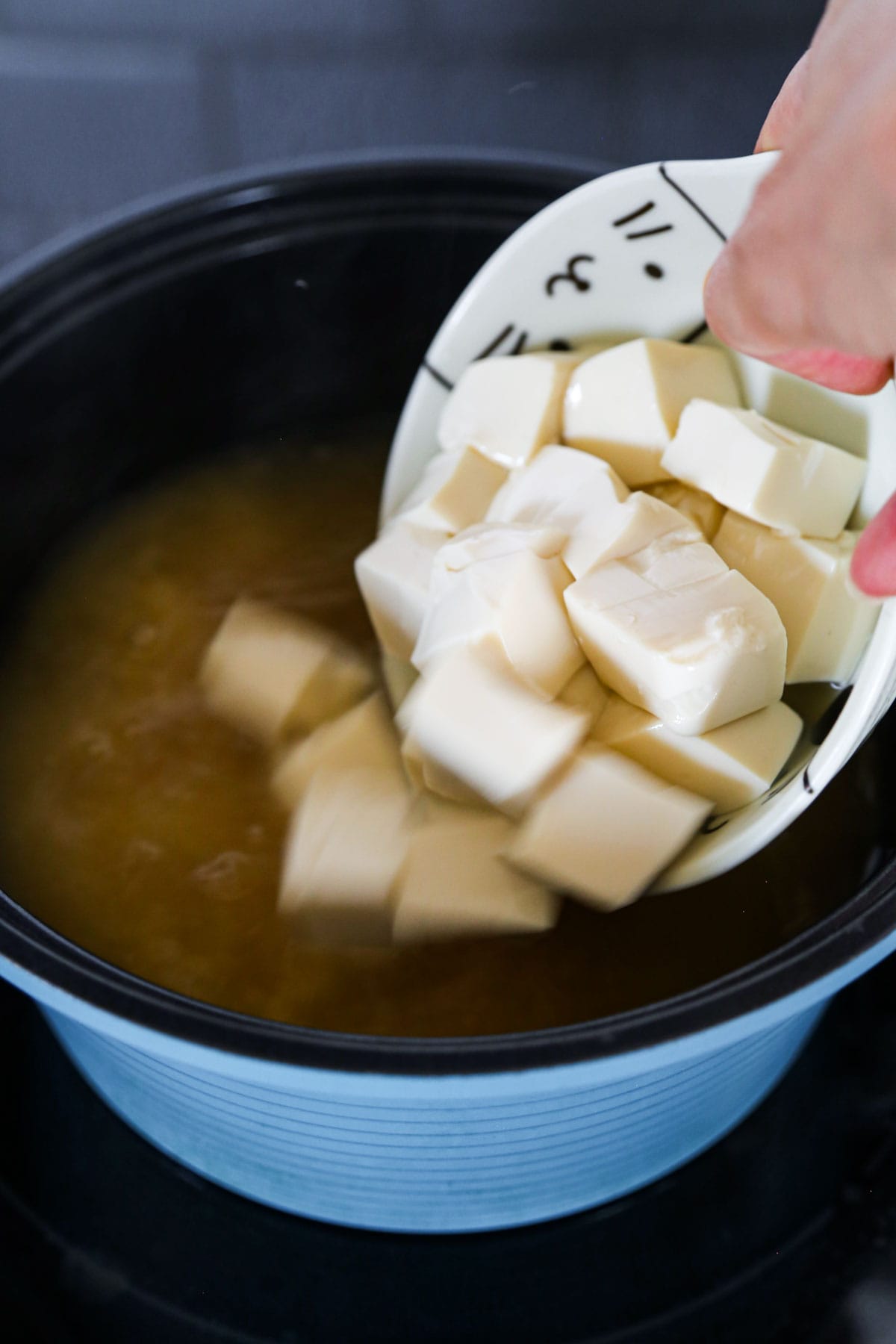
Storage and Reheating
Fridge: Keep this miso soup in an airtight storage container and refrigerate for up to 3 days – without any wakame added to it. If the soup contains wakame, take it out before saving it, otherwise it will make the soup slimy.
Freezing: First, let the soup cool down to room temperature. If the soup contains wakame, remove it. Transfer the soup to airtight storage containers or storage bags – I recommend individual servings to make it easier for later – and freeze for up to 1 month.
Reheating: Reheat the soup in a pot over low heat. I don’t recommend microwaving since the high temperature will kill the nutrients and probiotics.
What To Serve With My Miso Soup
In Japan, miso soup is usually served as part of a meal for breakfast, lunch, or dinner. Therefore, there are no specific time or ways to eat it. I personally love to eat it in the morning as part of a traditional Japanese breakfast with salted salmon (shiozake), tsukemono, and a bowl of Japanese rice.
If I have it as part of a lunch or dinner, I like to serve it with Japanese dishes such as omurice, natto rice bowl, nasu dengaku, chicken katsu, or curry rice. With other cuisines I find that it pairs well with Korean sticky chicken, dan dan noodles, bihon pancit, and honey sriracha tofu. As a snack, I sip miso soup with some edamame with soy and sesame sauce, broccoli tots, or inari sushi.
Other miso soups you might like: Onion miso soup, maitake mushroom miso soup, spicy miso ramen, miso ramen, miso kimchi ramen.
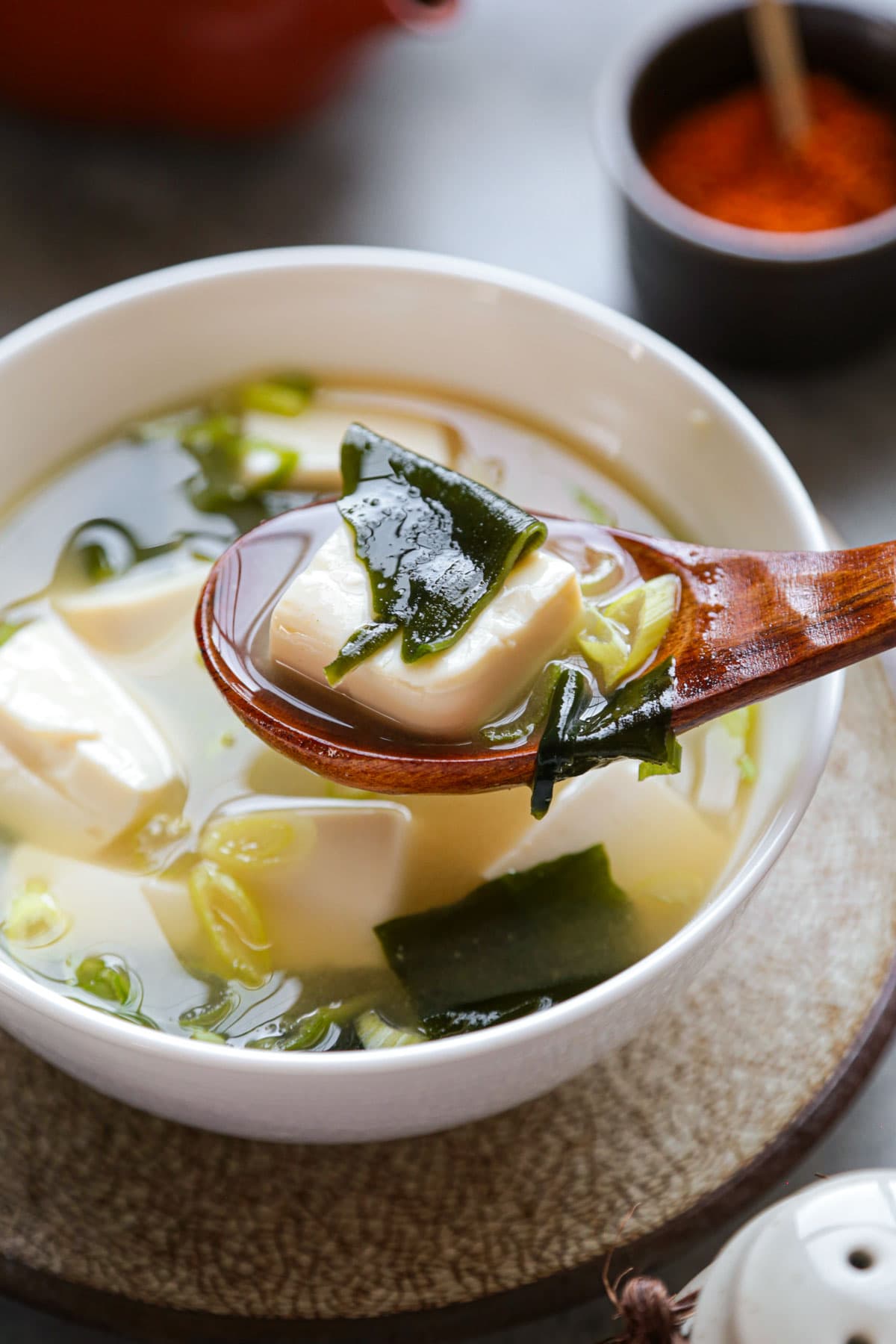
Frequently Asked Question
No, you cannot use fish stock instead of dashi since their flavor profiles are entirely different. Fish stock is made of fish bones, vegetables, and herbs like bay leaves and thyme, while dashi is made of kombu and bonito flakes. The flavor profile of fish stock is savory, slightly sweet, and aromatic, while dashi is rich in umami.
Not, not all miso soup is gluten-free. That’s because some miso pastes can contain barley, wheat, or rye. Always make sure to check the label and look for miso paste that’s 100% gluten-free if you are celiac or have a gluten intolerance.
No, you don’t have to keep the miso paste in the fridge. However, it should be kept in a dark and cool area and in an airtight storage container.
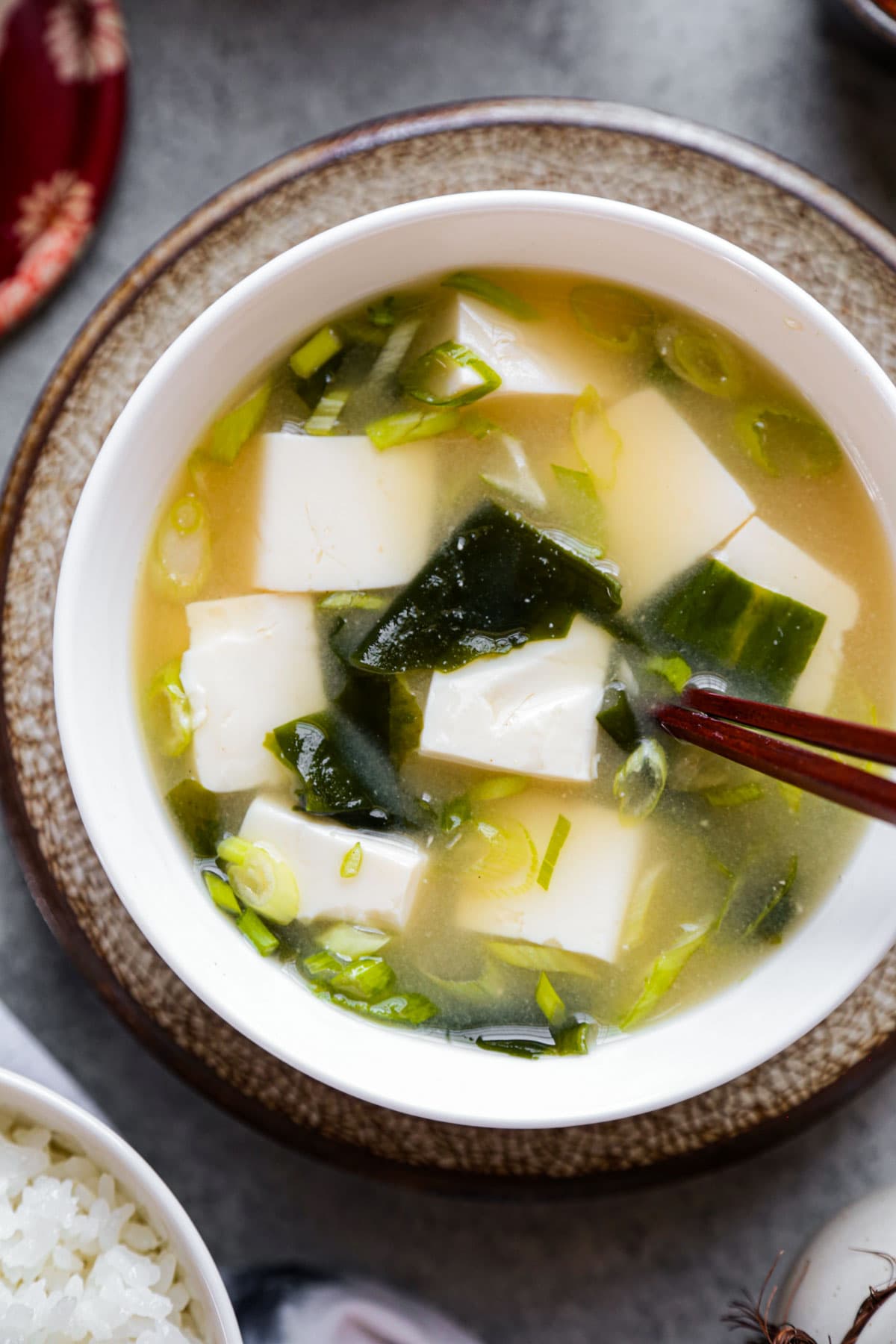
Did you like this recipe? Are there changes you made that you would like to share? Share your tips and recommendations in the comments section below!
Print
Miso Soup with Tofu and Wakame
- Prep Time: 10 minutes
- Cook Time: 5 minutes
- Total Time: 15 minutes
- Yield: 4 servings 1x
- Category: Soup
- Method: Boiling
- Cuisine: Japanese
- Diet: Vegetarian
Description
This is a classic tofu and wakame miso soup. The flavors are spot on – not too salty, delicate but full of umami, a little briny and nutty.
Ingredients
- 4 cups water
- 1 tablespoon dashi powder
- 1/2 block silken tofu (8 to 10 ounces)
- 3–4 tablespoons white miso paste or awase miso paste
- 2 teaspoons dried wakame
- 2 green onions, minced
Instructions
- Drain the tofu: Drain the tofu and place it on a cutting board. Slice it into ½-inch cubes. Set aside.
- Make the soup: Add the water and dashi powder to a pot and turn the heat on the high.
- Add the tofu: When the water is boiling, add the tofu and boil for 1 minute. Turn the heat off.
- Stir in miso paste: Place the miso paste in a small strainer and lower the strainer into the pot, until the liquid covers the miso paste. Stir the miso paste with chopsticks until it has fully dissolved.
- Add the wakame and serve: Divide the miso soup among 4 bowls and add the wakame, divided equally. Top with green onions and serve immediately.
Notes
Store the leftovers in an airtight container and refrigerate for up to 3 days.
Nutrition
- Serving Size: 1 serving
- Calories: 100
- Sugar: 0.4g
- Sodium: 762mg
- Fat: 0g
- Saturated Fat: 0g
- Unsaturated Fat: 0g
- Trans Fat: 0g
- Carbohydrates: 6.5g
- Fiber: 1.2g
- Protein: 9.5g
- Cholesterol: 0mg















Delicious thanks for sharing